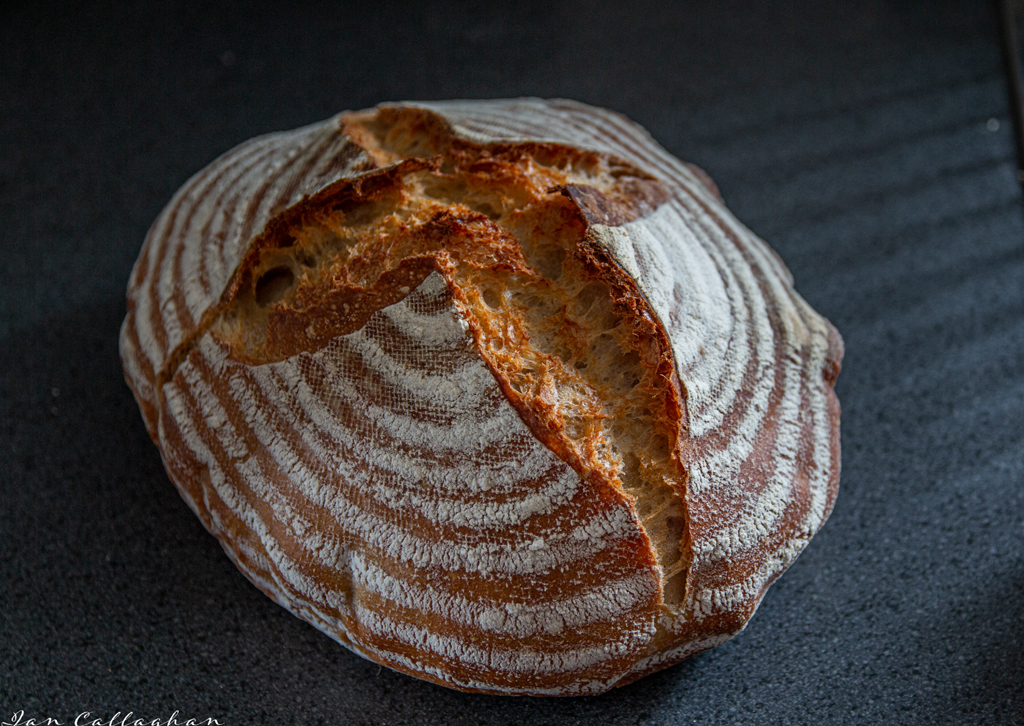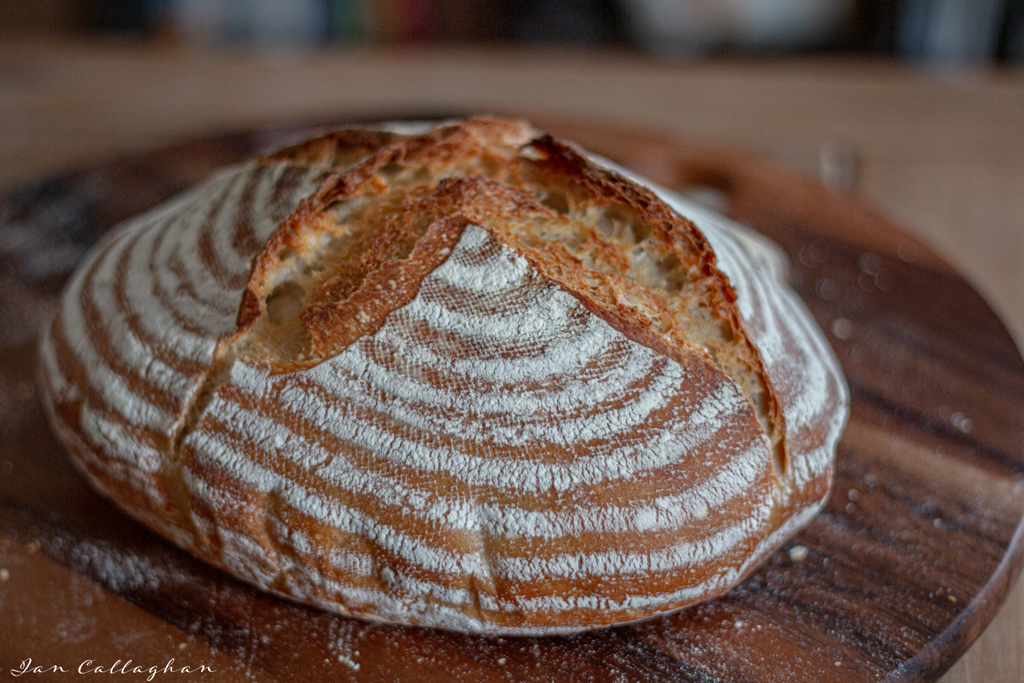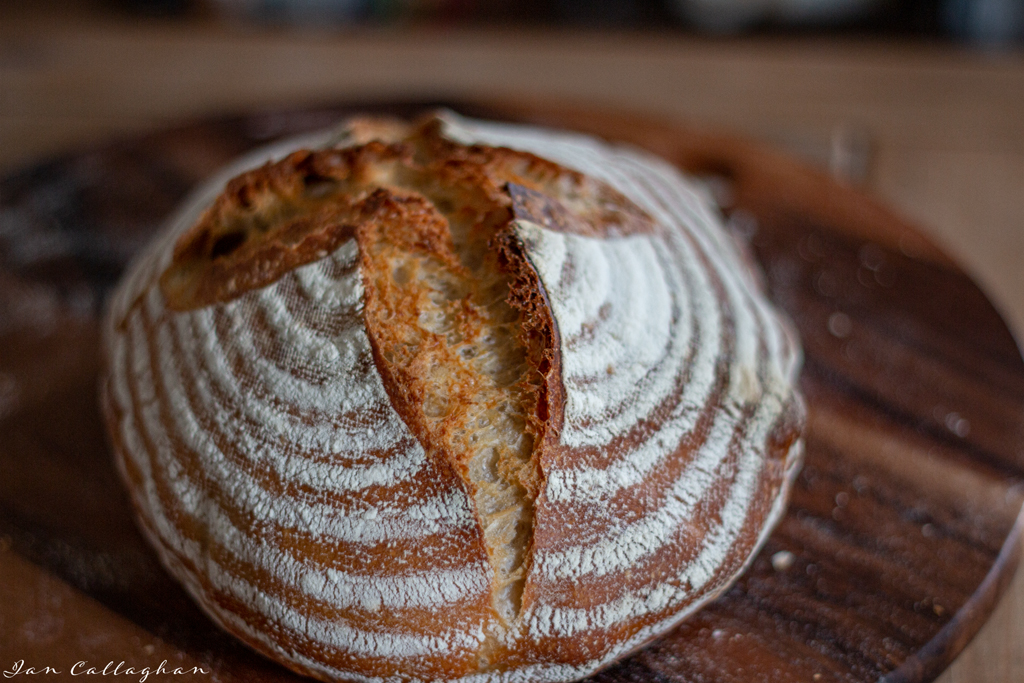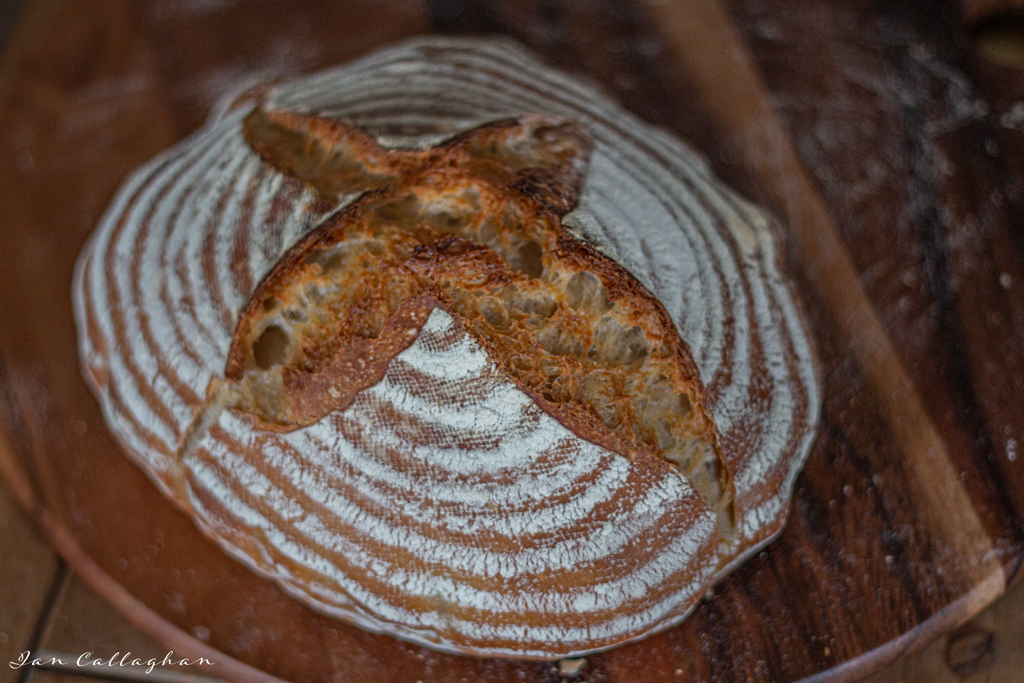Making Sourdough Bread
Bread the staff of life, Sourdough is the oldest form of leavened bread and was used at least as early as ancient Egypt. It was probably discovered by accident when bread dough was left out and good microorganisms wild yeast drifted into the mix. The resulting bread had a lighter texture and better taste.
Sourdough bread is made by the fermentation of dough using naturally occurring lactobacilli and yeast. It uses biological leavening rather than using cultivated baker’s yeast. The lactic acid produced by the lactobacilli gives it a more sour taste and improved keeping qualities.

The secret is a good starter, you can buy starters online. I am in the process of making jars of starter from mine to sell. You can of course make your own after all it is just flour and water, which like all living things you have to feed, I shall do a post on making and looking after a starter shortly.
So below is how I make my bread.
INGREDIENTS
- 50 – 100 g (1⁄4 – 1/2 cup) bubbly, active starter.
- 375 g (1 1/2 cups plus 1 tbsp) warm water
- 500 g (4 cups plus 2 tbsp) bread flour
- 9 to 11 g (1.5 – 2 teaspoons) fine sea salt
INSTRUCTIONS
- Make the dough: In the evening, whisk the starter and water together in a large bowl with a fork or spatula. Add the flour and salt. Mix to combine, finishing by hand if necessary to form a rough dough. Cover with a damp towel and let rest for 30 minutes.
- Stretch and fold. After half an hour, take a corner of the dough and pull it up and into the centre. Turn the bowl a quarter turn, repeat until you’ve performed this series of folds 4 to 5 times with the dough. Let dough rest for another 30 minutes and repeat the stretching and folding action. If you have the time: do this twice more for a total of 4 times in 2 hours.
- Bulk Fermentation (first rise): Cover the bowl with a towel and let rise overnight at room temperature, about 8 to 10 hours. The dough is ready when it has doubled in size, has a few bubbles on the surface, and jiggles when you move the bowl from side to side.
- Shaping: In the morning, coax the dough onto a lightly floured surface. Gently shape it into a round fold the top down to the centre, turn the dough, fold the top down to the centre, turn the dough; repeat until you’ve come full circle. If you have a bench scraper, use it to push and pull the dough to create tension.
- Resting: Let the dough rest seam side up rest for 30 minutes. Meanwhile, line an 8-inch (20-cm) bowl or proofing basket with a towel and dust with flour (preferably rice flour, which doesn’t burn or stick the way bread or plain flour does). Using a bench scraper or your hands, shape it again as described in step 4. Place the round into your lined bowl, seam side up.
- Proof (second rise): Cover the dough and refrigerate for 1 hour or for as long as 48 hours.
- Place a cast-iron dutch oven in your oven, and preheat your oven to 290°C or as hot as your oven will go. Cut a piece of parchment to fit the size of your baking pot.
- Score: Place the parchment over the dough and invert the bowl to release. Using the tip of a small knife or a razor blade, I use a Stanley knife blade, score your dough however you wish — a simple “X” is nice. Use the parchment to carefully transfer the dough into the preheated baking pot.
- Cook: Carefully cover the pot, close the oven, and reduce the heat to 230°C. Cook the dough for 30 minutes, covered. Remove the lid, lower the temperature to 200ºC and continue to bake for 10 – 15 minutes more. If necessary, lift the loaf out of the pot, and bake directly on the oven rack for the last 5 to 10 minutes. Cool on a wire rack for 1 hour before slicing.
So there we have the basics of making sourdough bread, I am going to do videos to show the shaping process, the lift and fold etc as well as making your own starter.





